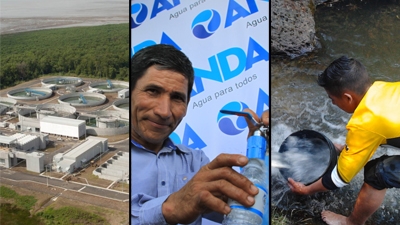A water and sanitation monitoring program is helping governments prioritize major reforms and has also identified the need for US$864 million of additional annual investment to help El Salvador, Honduras and Panama meet their national goals for water and sanitation.
Led by the Central American and Dominican Republic Forum for Water and Sanitation (FOCARD-APS) and supported by the World Bank’s Water and Sanitation Program (WSP), the Monitoring Progress of the Country in Water and Sanitation (MAPAS) initiative recently released its first three reports. The findings examine the major bottlenecks in water and sanitation service delivery and the reforms required to efficiently convert funding into quality, sustainable services for the poor.
Investment and Policy Gaps Identified in Water and Sanitation Sector
Developed in close coordination with regional governments, the reports revealed serious gaps between planned investments in water and sanitation services versus the dollars required annually to expand coverage of quality services to the population, including in El Salvador (US$255 million), Honduras (US$350million), and Panama (US$259 million).
Beyond investments, the reports also examined other areas including current policies, sector performance, information sharing, and service delivery. In El Salvador, research showed that populations in some urban areas are growing more rapidly than the current expansion rate of water and sanitation services can handle, potentially compromising current progress. Honduras is facing challenges in service delivery, as the limited quality and performance of existing services is translating into low user satisfaction and is compromising the sustainability of results already achieved. And though Panama has reached important milestones in service provision, its rural and periurban areas remains largely unserved.
“There is an understanding that neither money nor political will alone is sufficient to deliver universal water and sanitation access and to reduce poverty effectively,” said Antonio Rodriguez, Water and Sanitation Specialist for WSP in Central America. "Better planning, human resources, and reliable information systems have to be part of the equation – and the good news is governments are already implementing significant reforms based on the priorities identified in the MAPAS reports.”
Restructuring Water and Sanitation Policies to Better Serve Honduran Population
Following the elections in Honduras last year, the new government was able to use the report’s initial recommendations to help restructure its water and sanitation sector policies and better prioritize necessary reforms. As a result of the MAPAS process, officials now are using equity criteria to direct investments toward populations that do not have access to drinking water and improved sanitation and promoting better coordination between sector institutions and municipalities. The government has also begun decentralizing the urban services to the municipalities and creating more autonomous municipal utilities.
“The MAPAS report allowed us to better understand the broader issues in the water and sanitation sector and to map out specific steps needed to ensure we are meeting our population’s water and sanitation needs,” said Luis Romero Quezada, Technical Secretary of the National Council for Drinking Water and Sanitation (CONASA) and Coordinator of the FOCARD-APS Regional Technical Group on Information Systems.

